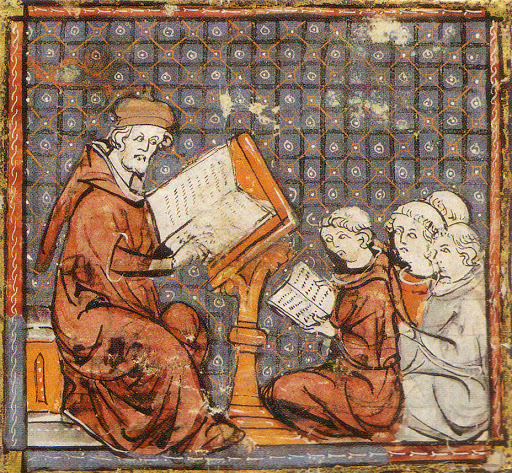When talking with teachers who are new to classical education, I am often asked about planning a lesson “classically.” In response I suggest that a classical lesson is distinct from all other lessons in that it possesses elements of the classical Trivium: Grammar, Logic, and Rhetoric.
If the ingredients of a lesson contain three features: deciding what to teach, organizing materials and activities, and bringing the lesson to life, then the Trivium is most readily applicable in the organization of the lesson. Each lesson should be ordered in a way that touches on the grammar, logic, and rhetoric of what is being taught. Here is what this could look like for a history lesson:
Grammar
The grammar of a lesson is the basic knowledge or facts that will establish the context and foundation for further learning to occur within the lesson. The history teacher’s role is to build anticipation for the material and build a framework of what is necessary to comprehend what will be taught.
For a history lesson it is more than just memorizing dates and introducing characters; it also involves observing maps and defining technical or key terms that will provide a point of connection or comprehension for students during the “meat” of the lesson. To teach the grammar of history, the teacher must consider and reconsider the foundational pieces that students should learn to unlock further understanding and mastery within the lesson itself.
Logic
The next element incorporated in a lesson is the logic or dialectic component of the material taught. Typically, when we hear of logic or dialectic, our minds drift toward thinking of syllogisms, inductive/deductive reasoning, and logical fallacies. However, in this context, the logic or dialectic of a subject that goes into planning a lesson is much different–it extends beyond just a formalized logic class.
The logic aspect of a lesson works to strengthen student learning by asking pointed questions and opening discussion about the material taught. It is likely this element of instruction already takes form naturally. Think for a moment of a history class learning the Age of Discovery. The key to unlocking the element of logic in this context is to begin asking questions that engender discussions around concepts and/or ideas within the story or primary source. For example, showing a picture of a caravel and telling students what it is in the grammar portion of your lesson is one thing. However, asking students to identify how it expanded trade by looking at its picture is another. This organization offers the student the opportunity to explain and see for themselves how important new technologies were for the development of trade, discovery, and exploration.
Rhetoric
Following the logic element of a lesson, the rhetoric aspect tends to be the trickiest to pin down. In the classical tradition, it is important for its contribution as the art of persuasion. Simply put, it was the art of effective communication. It served as the pinnacle of learning in that it gave an opportunity to use knowledge toward an end. The same idea applies when preparing it in a lesson.
The rhetorical element of the lesson challenges the teacher to consider what students will do with their knowledge learned. Conventional educational systems tend to make this end utilitarian at the altar of readiness for a career or college. Unfortunately, this has led these educational systems to prioritize historical instruction less and less by requiring fewer history classes for graduation.
However, in the classical thread, this end is the enrichment of the human soul. A rhetorical element to a history lesson occurs in two ways: when we ask students to reflect on what the historical story teaches us about the human condition and when students are invited to foster their own historical claims based on strong textual evidence and analysis. To varying degrees these exercises incorporate all the other aspects of the Trivium, which renders it the apex of the knowledge learned. Without instruction in the grammar and logic, the rhetorical piece of a lesson becomes futile. For instance, a student will feel sympathy for a historical character to a greater degree having comprehended more of the character’s context and circumstances through the grammar and logic elements of a lesson. We can say with confidence that this is an enriching end because students have the tools to see and understand the beauty of knowing and loving history, which in turn fills the human soul with joy.
Organizing a history lesson with the Trivium in mind requires practice, but the payoff is an organizational framework from that classical tradition that lays the rails toward mastery of learned material. It is important to note that the elements of the Trivium shouldn’t always occur as fixed stages within the lesson. Instruction in the grammar of a subject could appear at the beginning, middle, or end of a lesson. Consider the image of an actress who learns the grammar of her subject in memorizing lines, the logic of her character by knowing why certain techniques and emotions are employed, and the rhetoric of her role by performing in the show. At no point from preparation to performance could the actress practice one element without the others in mind.

